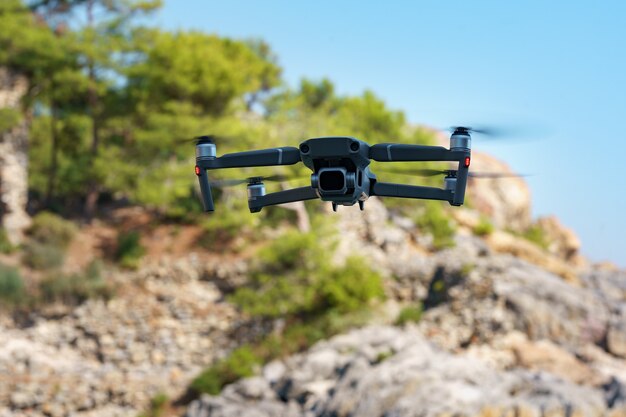
Sponsored article
With the proliferation of unmanned aerial vehicles (UAVs), ensuring their security against unauthorized access and interference has become more crucial than ever. Advanced RF detection technologies offer a promising solution to safeguard these aerial systems. By intercepting and analyzing radio frequency signals, RF detection plays a pivotal role in preventing potential threats. This article delves into the intricacies of such technologies, exploring their impact, innovations, and the challenges faced in securing UAVs.
In the rapidly evolving landscape of drone technology, RF detection plays a pivotal role in safeguarding the security of unmanned aerial vehicles (UAVs). As drones become more prevalent in various sectors, including commercial, industrial, and personal use, the risk of unauthorized access or interference has escalated significantly. RF detection technologies are crucial in addressing these challenges by intercepting signals, thus offering a layer of protection and oversight. Through sophisticated AI algorithms, these systems can filter and analyze the broadcast frequencies emitted by drones and controllers, ensuring that only authorized signals are permitted, eliminating the risk of signal spoofing and potential sabotage.
The ability to precisely detect drones and their communication with operators is fundamental to maintaining UAV security across extensive and diverse geographic areas. With the added capability of detecting multi-directional swarm attacks and geolocation precision, these systems offer unparalleled surveillance and control. This ensures a proactive stance against potential drone threats, ultimately preventing unauthorized activities and securing airspaces effectively. By offering both stationary and mobile deployments, RF detection systems represent a versatile and essential component in the comprehensive security and management of airspace integrity.
The realm of RF detection technology has witnessed remarkable transformations recently, driving forward UAV innovation and empowering enhanced security measures. One of the key advancements in this field is the development of more sophisticated signal processing techniques, which allow for precise identification and characterization of RF signals. These cutting-edge methods enable unmanned aerial vehicles to discern between benign and potentially threatening transmissions, providing a crucial layer of defense in increasingly congested airspace. By leveraging machine learning algorithms and real-time data analytics, advanced RF technology now ensures that UAVs are better equipped to respond to dynamic environments and adapt to new threats quickly.
Furthermore, improvements in antenna design and miniaturization have augmented RF detection capabilities, allowing UAVs to be outfitted with more sensitive and accurate detection systems without compromising mobility or payload capacity. This evolution in threat mitigation strategies is pivotal for safeguarding critical infrastructure, enhancing search-and-rescue operations, and ensuring comprehensive airspace surveillance. As UAV innovation continues to soar, the integration of these advancements in RF detection further cements the role of unmanned aerial vehicles in modern security applications.
Implementing RF detection in UAV systems presents several implementation challenges that need careful consideration to enhance security solutions. One of the primary hurdles is the technical limitations inherent in RF detection technologies. These include limited frequency range, sensitivity issues, and susceptibility to interference, which can lead to false positives or missed detections. Efficiently integrating RF detection capabilities into UAV systems requires overcoming these technical barriers, demanding innovative approaches in sensor design and signal processing techniques to ensure reliable operation in diverse environments.
In addition to technical constraints, integration issues pose another layer of complexity when deploying RF detection solutions in UAVs. The compact and lightweight nature of UAVs necessitates miniaturized and power-efficient detection systems that don’t compromise performance. Addressing these integration challenges involves collaborative efforts between hardware designers and software developers to create seamless and highly effective security solutions. By leveraging advancements in AI-driven analytics and machine learning, it is possible to enhance the accuracy and responsiveness of RF detection, thereby solidifying UAV systems’ security measures.